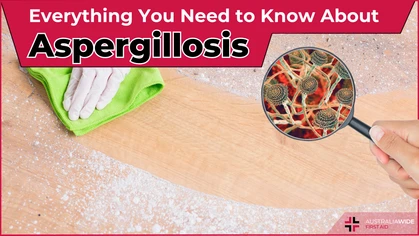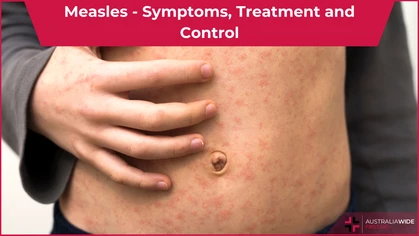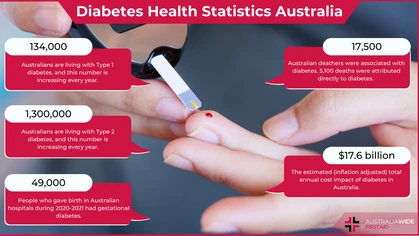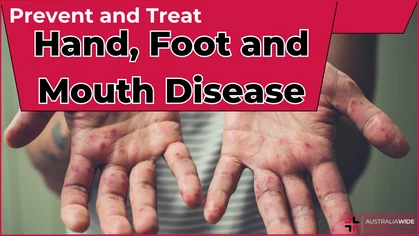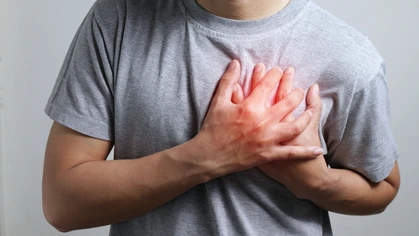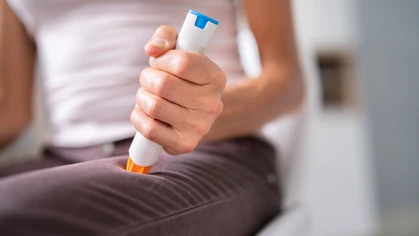Understanding Stroke Symptoms and Seizure Symptoms

Disease

Find out how to recognise the signs and when to seek emergency medical help for these serious medical conditions.
Strokes and seizures are two serious medical conditions that can have severe consequences. Although they share some similarities, there are also important differences between them. Learn about the symptoms, causes, and treatment options for both strokes and seizures, including post-stroke seizures.Seizure vs. Stroke: How to Tell the Difference
Seizures and strokes can have similar symptoms, but some key differences exist. Seizures happen when there is unusual electrical activity in the brain., while strokes are caused by interrupted blood flow. Suppose you are unsure whether someone is experiencing a seizure or a stroke. In that case, calling for emergency medical help is essential.Stroke Symptoms
In strokes, blood flow to the brain is interrupted by a clot or a ruptured vessel, interrupting brain function. Some symptoms of a stroke include:- Sudden weakness or numbness on one side of the face or body, often affecting the arm, leg, and/or face
- Difficulty speaking or understanding speech
- Sudden trouble seeing in one or both eyes
- Sudden dizziness or loss of balance or coordination
- Severe headache with no known cause
Seizure Symptoms
There are different types of seizures, each with its unique symptoms. Some common symptoms of seizures include:- Sudden, uncontrolled movements of the body or limbs
- Stiffening of the body or limbs
- Loss of consciousness
- Unexplained confusion or staring spells
- Rapid eye movements or blinking
- Strange sensations, such as tingling or numbness
Types of Seizures
Seizures come in different types., including focal seizures, atonic seizures, and myoclonic seizures, among others. Each type has its set of symptoms and requires different treatment approaches.Focal seizures ( partial seizures)
A unique type of seizure that begins in a specific brain region. Depending on where the seizure activity occurs, it can have an impact on a person's awareness, physical movements, emotional responses, or sense perceptions. They are also known as partial seizures and can be divided into two types, simple or complex. Simple focal seizures do not lead to a loss of consciousness, while complex focal seizures do. Symptoms:- Affect just one part of the brain
- Cause changes in sensation or emotion
- Lead to loss of consciousness or convulsions ( loss of consciousness only in complex focal )
Atonic seizures
This condition is marked by a sudden decrease in muscle strength., causing muscle weakness and an inability to contract. This can result in the person collapsing or falling, potentially leading to injuries. Symptoms:- Sudden loss of muscle tone
- Result in falls or head injuries
- Brief periods of unconsciousness
Myoclonic seizures
Refer to an ailment that entails abrupt and automatic muscle movements, which can considerably interfere with an individual's normal daily routines. Symptoms:- Sudden jerks or twitches in muscles
- Affect different parts of the body
- It can occur in clusters or individually.
Types of Strokes
Basically, strokes fall into two categories: ischemic and hemorrhagic. The cause of ischemic strokes is a blockage of a blood vessel in the brain, while hemorrhagic strokes are ruptured blood vessels.Ischemic strokes
Account for 87% of all strokes and are the most common type. It can be caused by a blood clot that forms in a blood vessel in the brain (called a thrombotic stroke), or by a blood clot traveling to the brain from somewhere else in the body (called an embolic stroke). Ischemic stroke symptoms:- Sudden weakness or numbness on one side of the face or body, often affecting the arm, leg, and/or face
- Difficulty speaking or understanding speech
- Sudden trouble seeing in one or both eyes
- Sudden dizziness or loss of balance or coordination
- Severe headache with no known cause
Hemorrhagic strokes
They are less common, accounting for around 13% of all strokes. They can be caused by a weakened blood vessel that ruptures and bleeds into the brain (called an intracerebral hemorrhage) or by a blood vessel on the surface of the brain that breaks and bleeds into the space around the brain and skull (called a subarachnoid hemorrhage) Hemorrhagic stroke symptoms:- Sudden severe headache, often described as the "worst headache of your life."
- Nausea and vomiting
- Stiff neck
- Seizures
- Sudden weakness or numbness on one side of the face or body, often affecting the arm, leg, and/or face
- Difficulty speaking or understanding speech
- Sudden trouble seeing in one or both eyes
- Sudden dizziness or loss of balance or coordination
Transient Ischemic Attack (TIA)
A transient ischemic attack, also known as a mini-stroke, is a temporary disruption of blood flow to the brain. This type of stroke is caused by a blood clot that blocks a blood vessel for a short period, usually a few minutes. Transient ischemic attack (TIA) symptoms:- Sudden weakness or numbness on one side of the face or body, often affecting the arm, leg, and/or face
- Difficulty speaking or understanding speech
- Sudden trouble seeing in one or both eyes
- Sudden dizziness or loss of balance or coordination
- Loss of consciousness for a brief period of time (usually seconds to minutes)
- A brief episode of confusion or memory loss
Post-Stroke Seizures
After a stroke, some individuals may experience seizures. These seizures are called post-stroke seizures and can occur due to changes in the blood supply to the brain or the development of scar tissue. The risk of post-stroke seizures is highest within the first few weeks after a stroke. Treatment may involve medications to control seizures or, in some cases, surgery to remove the scar tissue that is causing the seizures. In atonic seizures, muscles lose their tone suddenly, resulting in falls or other accidents. Myoclonic seizures cause sudden muscle jerks or twitches. Generalized seizures can result in unconsciousness and uncontrollable shaking as they impact both brain hemispheres.Blood Flow to the brain
Brains require constant blood flow to function properly. The arterial supply facilitates blood flow to the brain, which delivers oxygen and nutrients to the brain cells. The anterior cerebral artery, middle cerebral artery, and basilar artery are some main arteries supplying blood to the brain. The circle of Willis is a ring-shaped network of blood vessels located at the base of the brain. The joining of the internal carotid and vertebral arteries forms it. In addition to the arterial supply, Willis's circle helps ensure that blood is delivered to all parts of the brain.Understanding Blood Flow to the Brain
The brain requires a constant supply of oxygen and nutrients to function properly. This is supplied by the blood vessels that run through the brain. The two main arteries that supply blood to the brain are the internal carotid arteries and vertebral arteries. These arteries join together at the base of the brain to form the circle of Willis, which helps to ensure a constant supply of blood to the brain.High Blood Pressure and Heart Disease
High blood pressure and heart disease are risk factors for strokes and seizures. As a result of high blood pressure, blood vessels can be damaged within the brain and may rupture or become blocked. Heart disease can also increase the risk of blood clots forming in the blood vessels, leading to strokes or seizures. If you have high blood pressure or heart disease, managing these conditions to reduce risk is important.The treatment and recovery for strokes and seizures depend on the type and severity of the condition
The treatment and recovery for strokes and seizures depend on the type and severity of the condition. Strokes may be treated with medications like thrombolytics, surgery to remove blood clots, or procedures to repair damaged blood vessels. For strokes, treatment options may include medications to dissolve blood clots (thrombolytics), surgery to remove blood clots, or procedures to repair damaged blood vessels. Stroke rehabilitation may also involve physical, occupational, and speech therapy to help individuals regain lost functions. For seizures, treatment options may include antiepileptic medications, ketogenic diets, and surgery in some cases. It is important to work with a healthcare professional to determine the best treatment plan for the specific type of seizure and underlying cause. Post-stroke rehabilitation may involve physical, occupational, and speech therapy,With antiepileptic medications, ketogenic diets, or surgery. A healthcare professional should determine the best treatment plan for seizures and underlying causes Recovery from strokes and seizures may vary depending on individual factors such as age, overall health, and severity. Rehabilitation and therapy can help individuals regain lost functions and improve their quality of life. It is important to seek medical attention as soon as possible to increase the chances of successful treatment and recovery. Living a healthy lifestyle, managing chronic conditions like hypertension and diabetes, and avoiding smoking and excessive alcohol consumption can reduce the risk of stroke and seizure. The types of strokes include middle cerebral artery stroke, basilar artery stroke, and anterior cerebral artery stroke. The arterial supply to the brain involves the circle of Willis, internal carotid arteries, and vertebral arteries. If you experience sudden weakness or numbness in your face, arm, or leg, confusion, trouble speaking or understanding speech, difficulty seeing or walking, dizziness, or a severe headache, it could be a sign of a stroke. Symptoms of a seizure may include sudden jerking movements, loss of consciousness, staring spells, or atonic and myoclonic seizures.When to Call for Emergency Medical Help
If you or someone you know experiences a stroke or seizure symptoms, it is important to seek emergency medical attention immediately. Calling 000 or your local emergency number can help ensure that you or your loved one receives prompt and appropriate treatment. Remember, the sooner treatment starts, the better the chances of recovery. Strokes and seizures are serious medical conditions that require prompt medical attention. Understanding the symptoms, causes, and treatment options can help you or your loved one receive the care you need to manage these conditions. To minimize risks, it's important to manage factors like high blood pressure. Heart disease can also help reduce the risk of strokes and seizures.
Originally published at
https://www.australiawidefirstaid.com.au/resources/seizures-after-stroke
as part of the Australia Wide First Aid Articles Library



